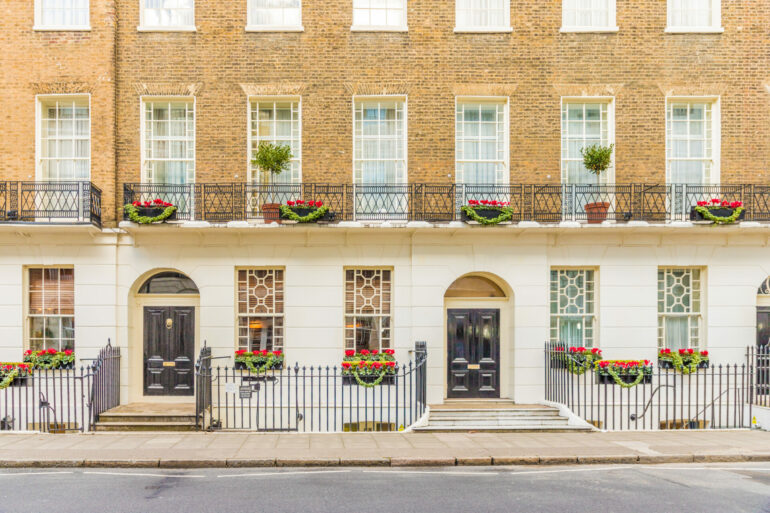No sign of price slowdown in prime London housing market as demand remains high and stock levels low
Rental market continues to suffer as more tenants renew and fewer new homes available to rent
July 2022
Analysis of the Prime London housing market* by independent property analysts, LonRes**
Analysis of LonRes data for this release has been carried out by Neal Hudson of BuiltPlace
Prices continued to rise across Prime London in July ending the month 7.7% higher than last year and 4.2% higher than their pre-pandemic average (2017-19), according to independent property analysts, LonRes .
Across Prime London prices are now close to their 2014 previous peak. Prices were just 2% lower between May and July 2022 than at the same period in 2014.
As prices have recovered, the average discount to asking price has nearly halved – from 9.6% in May-July 2019 to 5.8% in May-July 2022.
But there are variations across Prime London by both place and property type – larger discounts (the difference between asking and achieved price) were recorded in Prime Central London than in Prime Fringe, and there were smaller discounts for houses than flats.
A lack of stock and increased demand continues to drive prices. In July new instructions rose by 4.7% compared to the same period last year.
Prime London’s rental market continues to suffer from an imbalance between supply and demand. Year-on-year new lets were down over 45% in July, leading to the lowest number of properties let in the month of July since LonRes records began (2005).
| Prime Sales | Prime Lettings | |||
| AnnualChange | Change Since 2017-19 | AnnualChange | Change Since 2017-19 | |
| Achieved prices/ rents | 7.7% | 4.2% | 25.8% | 14.6% |
| Properties sold/let | 43.7% | 9.8% | -45.8% | -52.9% |
| New instructions | 4.7% | 22.6% | -15.9% | -42.1% |
Anthony Payne, managing director, LonRes, said: “Despite rising concerns about the state of the wider economy, the Prime London market is in good health.
“During July activity levels in Prime London were above pre-pandemic levels. Sales in July were 9.8% higher than their 2017-19 average and prices were 4.2% up.
“Meanwhile, new instructions remain firmly higher than their pre-pandemic average (22.6%).”
| Prime Central | Prime Inner | Prime Fringe | All PrimeLondon | |
| House | -6.1% | -4.7% | -3.8% | -4.8% |
| Flat | -7.9% | -6.1% | -5.2% | -6.2% |
| Total | -7.3% | -5.8% | -4.8% | -5.8% |
Low stock levels, high demand and increased renewals characterise prime London rental market
Payne added: “The rental market across Prime London continues to suffer from a combination of low activity and rapidly rising rents.
“Activity levels, be they new instructions, under offers, or new lets, are still well below normal levels and close to the exceptionally low levels seen during the market lockdown of 2020.
This continues the reversal of last year’s market as people return to work and city centre living. With limited homes available to rent, many existing tenants are choosing to renew, while new tenants are left to fight over the few remaining properties available to rent.
As a consequence many tenants are finding themselves subject to tougher rental tenancy terms.
Looking ahead, the next few months are traditionally a busy period for the rental market. Much like the sales market, the availability of new properties will be key for both those looking for a home and those involved in the business of letting them out.
Payne concluded: “On the face of it there is a lot to be downbeat about. And yet beyond the backdrop of a cost of living crisis, rising interest rates and a global economic slowdown, London’s prime housing market continues to hold its own.
“People still want to move home and buying agent’s report demand from Prime London purchasers to be higher than ever.
“The top-end of the market (above £5m+) continues to be buoyant and houses remain the preferred choice. That said flats – particularly those with no outside space – are still struggling to find buyers and their asking prices reflect this.
“It seems as though purchasers have not been put off by rising interest rates. And anecdotally we hear purchasers have factored these in and are buying with their eyes wide open.
“London’s prime rental market is however a completely different story. We have long reported a shortage of stock at a time when demand is on the rise. With no sign of increased stock levels and tenant renewals on the up, it is difficult to know how this particular deadlock is to be resolved.”




